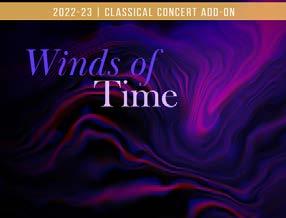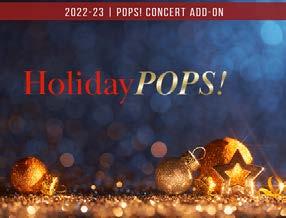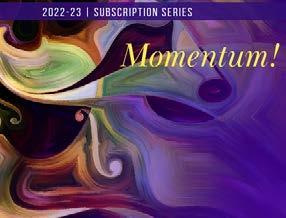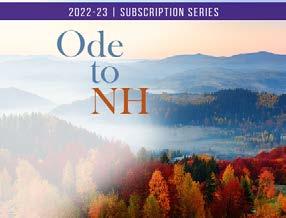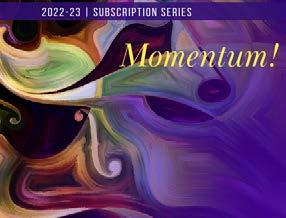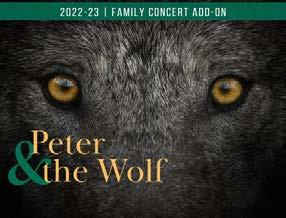
















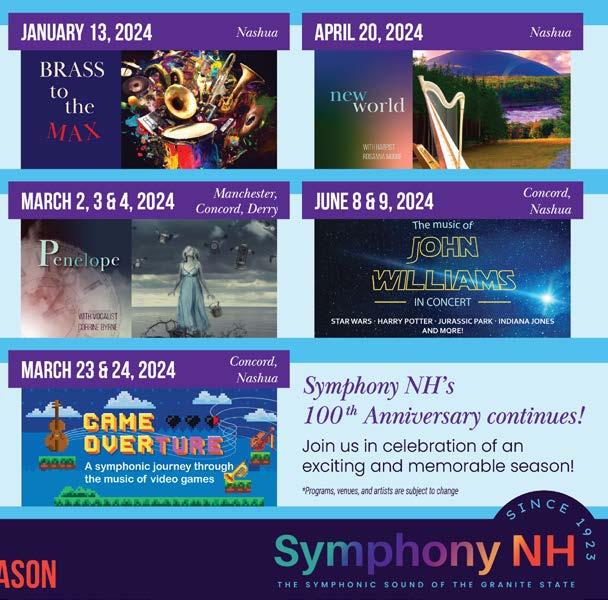
As humans, we crave connection; it’s in our DNA In late March 2020, in the earliest stages of the pandemic, authors Michelle Langley and Leah Coutts wrote an article for the World Economic Forum “Why do we turn to music in times of crisis?” Their conclusion was that “Music creates a sense of belonging and participation It is an antidote to the growing sense of alienation and isolation in society in general – even more so now we are being asked to actively practice social distancing and isolation . Social distancing and geographical isolation do not have to result in social isolation In the face of uncertainty and panic, music is a social balm for soothing anxiety, enhancing community connections, and acting in defiance of a threat to community spirit” .
As Symphony NH approaches our 100th anniversary in April 2023, I have been thinking about 100 years of this connection through music; of the generations of New Hampshire and northern Massachusetts residents who have shared the experience of live orchestral music together And of the generations of audiences sitting in the dark concert hall and having that visceral feeling of the orchestra as the sound washes over and through you – it’s thrilling! No live concert can ever be repeated exactly as it was the night before as each time is unique . And those experiences are shared for that one performance with the musicians, conductor, and audience It creates a bond between the music makers and the audience that is special
And while we are excited to celebrate this momentous anniversary, we are also looking to the future of Symphony NH and the next 100 years of musical connections


Sincerely,
Deanna R . Hoying Executive Director
We’ve been patient; we’ve been missing live music, and missing hearing it together . I’m thrilled to experience it once again as Symphony NH begins its 100th year of musical gifts to our state.
In celebrating this extraordinary milestone, we are also celebrating the communities and people of New Hampshire with performances throughout the state – Nashua, Concord, Manchester, Berlin, Lebanon – in an auditorium, garden, opera house, theater, church, and college . From our opening “Tribute to New Hampshire” with the stunning Firebird Suite by Stravinsky, to “Momemtum” with Schubert’s elegant Unfinished Symphony, we invite all audiences to experience the power of music
I’m honored to serve as president of the board of directors of New Hampshire’s oldest professional orchestra . I’m proud of the trustees, patrons, donors, and sponsors who are committed to ensuring that we are around for the next 100 years! I’m proud of the musicians who have persevered through one of the most tumultuous times in our history, and I’m proud of our Music Director, Roger Kalia, who brings talent, energy, innovation, and inspiration to our orchestra
Music is the antidote to isolation and stress; it has the power to transcend walls and boundaries with its language . I’m pleased to join our executive director, Deanna Hoying, in our goal of connecting communities made up of diverse audiences Thank you for joining us!

Sincerely,
Mary Jordan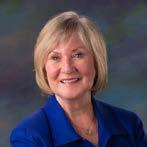 Directors
Directors

Welcome to our 100th anniversary season! I am excited to share with you a truly meaningful and special season for the historic occasion of Symphony New Hampshire’s 100th anniversary. The music reflects the orchestra’s past and present, highlighting our connection to New Hampshire in multiple ways while also focusing on our incredible musicians . Be sure to say hello to our new orchestra members as well! The exciting works we will perform have been carefully chosen as we mean to inspire and connect with all of you throughout the season .
I am honored to be the music director of New Hampshire’s oldest professional orchestra From World War I to the Pandemic, Symphony NH has endured and shared the joy of music with communities throughout the Granite State It is a true privilege to be a part of this organization’s history and its future .
Our upcoming season will be one of our most ambitious yet, with blockbuster works such as Stravinsky’s The Firebird Suite and Mahler’s First Symphony in thrilling chamber orchestra arrangements; a collaboration with the Nashua Choral Arts Society and Nashoba Valley Chorale in Mozart’s Requiem; hidden gems by Astor Piazzolla and Amy Beach; not to mention works by TJ Cole, Oliver Caplan, and John Adams . Our 100th anniversary concert - celebrated to the day of our first concert one hundred years ago - promises to be an event you won’t want to miss with the return of renowned cellist Amit Peled in Dvorak’s iconic Cello Concerto . As our anniversary falls towards the end of this season, our celebration is actually two seasons long . 2022-23 is just the beginning!
All of us at Symphony New Hampshire look forward to seeing you in the concert halls around the state . We are so glad that you are here to celebrate this milestone with us . See you soon!
Sincerely,
Roger Kalia Music Director, Symphony NH
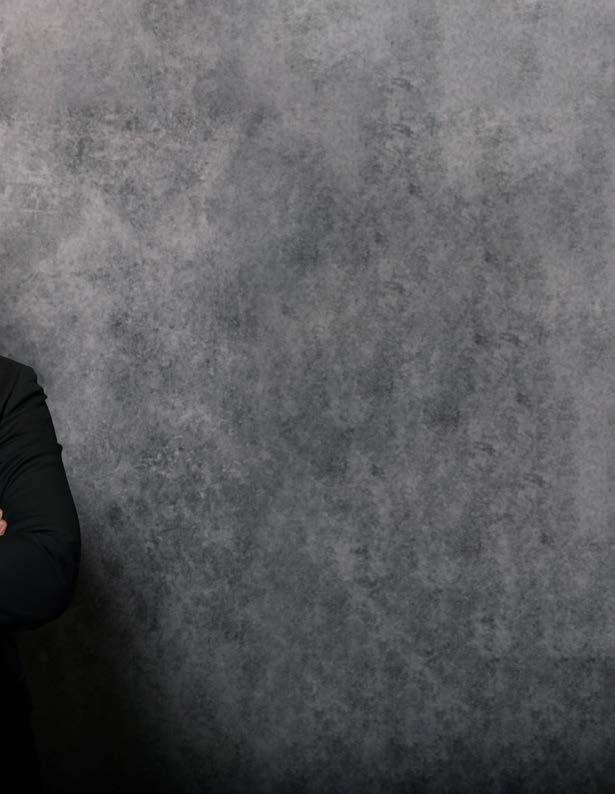


With a dynamic podium presence and noted passionate interpretations, Indian American conductor Roger Kalia has been celebrated by audiences and industry professionals alike, with Symphony Magazine recently recognizing him nationally as one of five first-year music directors for his innovative programming during the pandemic . Praised for bringing a “fresh view to classical music” (The Republic, IN), Kalia is now in his fourth season as Music Director of the 100-year-old Symphony New Hampshire, and of Orchestra Santa Monica, and in his third season as Music Director of the Evansville Philharmonic Orchestra . He is also Co-Founder and Music Director of the 12-year-old celebrated Lake George Music Festival in upstate New York The recipient of an Elizabeth Buccheri Opera Residency with Lyric Opera of Chicago and five Career Assistance Awards from the Solti Foundation U .S ., Kalia has been praised for his “extraordinary leadership” (Courier & Press)
A versatile communicator and frequent guest conductor, in recent seasons, Kalia has appeared with the National Symphony Orchestra at the Kennedy Center, Chicago Sinfonietta, Louisiana Philharmonic Orchestra, Szczecin Philharmonic (Poland), Boise Philharmonic Orchestra, Spartanburg Philharmonic Orchestra, and the symphony orchestras of Redlands, Lima, Adrian, Bakersfield, Great Falls, Owensboro, Spokane, and Wheeling .
Kalia leads Symphony NH this 2022-23 as it celebrates its 100th anniversary Amongst the notable events are the season opening concert featuring works written about or in New Hampshire; a collaborative performance of Mozart’s Requiem with the Nashua Choral Society and Nashoba Valley Chorale; and the 100th anniversary concert of Symphony NH’s in April 2023 that marks their first concert to the day one
hundred years later in a program featuring cellist Amit Peled performing Dvorak’s Cello Concerto . In addition to conerts with his Lake George Music Festival and the Evansville Philharmonoc, Kalia also debuts with the Columbus Indiana Philharmonic, Boston’s Longy Conservatory Orchestra Flex, and returns to the Redlands Bowl with the Hollywood Chamber Orchestra .
In his various music director positions, Kalia has focused on innovative artistic partnerships highlighting a variety of community partners In November 2021, Kalia collaborated with composer Derrick Skye, historian Robbie Jones, and painter Kevin McCants to commission and premiere Orchestra Santa Monica’s first-ever art film titled We Gather: Black Life in Santa Monica told through music, visuals, and narrative, which has since received screenings at the California African American Museum, Santa Monica History Museum, and KUSC In February 2023, We Gather will receive its first-ever live performance as part of OSM’s ten-year anniversary season. Kalia’s first two seasons as music director of the EPO have seen fruitful artistic collaborations with community organizations such as Historic Bosse Field, the Tri-State Hindu Temple, Evansville Civic Theatre, and the Evansville Wartime Museum Kalia’s visionary programming has been featured on PBS’ “On the Road with Brick Briscoe” and “Regional Voices,” and in publications such as Evansville Living Magazine and Symphony Magazine . In 2011, Kalia and two of his colleagues co-founded the Lake George Music Festival, which has been described as “an unparalleled classical music experience in the Adirondacks” (Chronogram) As one of the nation’s foremost classical music artist retreats, the festival presents cutting-edge artists and composers performing classical and new music, traditional and experimental concerts and recitals of various sizes, open rehearsals, informational talks, and a variety of community
“Kalia brings a fresh view to the classical music.”
— THE REPUBLIC (IN)
outreach programs Kalia has collaborated with a wide range of artists including singers Angela Brown, Reginald Smith Jr, and Shayna Steele; guitarist Meng Su; Cirque de la Symphonie; Electronic Dance Music
(EDM) duo MAKO; Project TRIO; singer/songwriters
Randy Newman and Randy Jackson; Philadelphia Orchestra concertmaster David Kim; violinists Nathan Cole, Glenn Dicterow and Sphinx Competition winner
Annelle Gregory; dancers of the Charlotte Ballet and Ballet Indiana; pianists Fei-Fei Dong, Sean Chen, and Misha Dichter; rock musicians Johnny Rzeznik of the Goo Goo Dolls and Nancy Wilson of Heart; the B-52s; sitar player Anoushka Shankar; actor Jack Black; and visual artist/astronomer Dr . José Francisco Salgado . A native of New York State, Kalia holds degrees from Indiana University, the University of Houston, and SUNY Potsdam’s Crane School of Music His primary mentors include David Effron, Arthur Fagen, and Franz Anton Krager with additional mentoring from David Zinman, Marin Alsop, Robert Spano, and the late Kurt Masur Previous posts include Associate Conductor of California’s Pacific Symphony, Assistant Conductor of the Charlotte Symphony Orchestra, Conducting Fellow with the Chicago Sinfonietta, and Music Director of the Pacific Symphony Youth Orchestra, Young Musicians Foundation (YMF) Debut Orchestra, and the Columbus Symphony Orchestra (IN) Kalia attended the Aspen Music Festival where he was a Conducting Fellow in 2010, and in 2011, Kalia won Second Prize in the Memphis Symphony International Conducting Competition, which led to his debut with the orchestra the following season and launched his professional career Kalia is married to musicologist / violinist Christine Wisch
“Kalia led with passionate intensity and a clear beat ... he’s one to watch.”
— LONG BEACH GAZETTE (CA)
“... what a remarkable performance [of the Mendelssohn “Scottish” Symphony]... Mendelssohn’s paean to the rugged beauty of that northern nation came alive in this fine performance, with the EPO under the extraordinary leadership of Kalia.”
— COURIER & PRESS (IN)
“Kalia emerges to my ear as the [Lake George Music] festival’s secret weapon. His enthusiasm and positivism ... is unbounded. His leadership, impressive.”
— THE GLENS FALLS CHRONICLE (NY)


Roger Kalia, Conductor
Dvořák | Cello Concerto in B minor, Op. 104
Amit Peled, cello

~ Intermission ~
Schubert | Symphony No. 8 in B minor
‘Unfinished’
I. Allegro Moderato
J. Strauss Jr. | On the Beautiful Blue
Danube
Brahms | Hungarian Dance No. 5
This evening’s concert will run for approximately 100 minutes with an intermission.
Dvořák’s Cello Concerto in B Minor has been a mainstay of solo cello repertoire since its premiere in 1896 and continuously ranks as one of the two most important concertos for the instrument—the other being the Cello Concerto in E Minor by Edward Elgar (1919), which itself was influenced by Dvořák’s masterwork. The work’s enduring success owes to the ways in which Dvořák balances the technical brilliance of virtuosic playing with emotional depth and melodic beauty . The composer was intimately familiar with the cello’s capabilities, having played cello in addition to piano, organ, and violin, and he used this knowledge to create a piece that showcases the instrument’s full range of expressive possibilities . Despite his affinity for the instrument, Dvořák wrote only one cello concerto The piece is dedicated to Czech cellist Hanuš Wihan, who was a close friend and colleague The two met at the Prague Conservatory in 1889 while Dvořák was a professor of composition and Wihan was studying cello Wihan quickly established himself as an outstanding cellist, becoming in 1892 the principal cellist of the conservatory’s resident Czech String Quartet for which Dvořák composed a handful of pieces . The two remained friends following Dvořák’s relocation to the United States as director of the National Conservatory of Music from 1892–1895, during which time Dvořák wrote his cello concerto. Scholars have suggested that Dvořák was inspired to write a cello concerto after hearing a performance in New York of American composer and cellist Victor Herbert’s Cello Concerto No 2 in 1894, but Dvořák never confirmed such inspiration. Dvořák wrote his cello concerto with Wihan in mind and

met him back in Prague in September 1895 to go through the finished concerto. Wihan made several suggestions to the solo part that Dvořák accepted, but when he requested the addition of two more cadenzas, Dvořák put his foot down and defended his piece as it was When he sent his work for engraving and publications, the confident composer included a note that no one—including Wihan—should make changes to the composition . The cello concerto made its public debut on March 19, 1896, in Queen’s Hall in London in a performance by the London Philharmonic with the English cellist Leo Stern as the soloist. Dvořák’s unwillingness to change the concerto was not, however, the reason why the work’s dedicatee, Wihan, did not premiere the piece Rather, the choice of the soloist was the result of a scheduling conflict. Stern performed the challenging piece admirably, and both the piece and performance were well received . Many scholars have identified expressions of homesickness and nostalgia in Dvořák’s compositions during the period of his American residency, and the cello concerto supports such observations. The first movement, marked Allegro, begins with a dramatic and lengthy introduction, which sets the stage for the cello— who enters nearly five minutes later—with a bold presentation of the first theme that is embellished with emphatic triple stops The second theme, which Dvořák himself described as having resulted from “a great deal of reflection,” suggests a sense of longing and introspection . In the recapitulation of the first movement, Dvořák presents these two themes in a major mode, concluding the movement with a sense of optimism or joy that also allows the cello to shine in a brilliant coda . The second movement begins with a serene, pastoral soundscape in which the cello enters with one of Dvorak’s most hauntingly beautiful melodies Unexpected harmonic turns provide poignant moments of reflection that

also aid in building emotional intensity . The stormy middle section includes a quotation of a song Dvořák composed a few years earlier, “Kez duch muj san” (“Leave me alone”) The song was beloved by Dvořák’s sister-in-law, Josefina Kaunitzová, who became ill and passed away while the composer was working on his concerto. Josefina occupied a special place in Dvořák’s heart, for he had fallen in love with her but was rejected and ended up marrying her sister, Anna The lengthy coda for this movement, marked quasi cadenza (like a cadenza), was added when Dvořák learned of Josefina’s passing and presents a hymn-like elegy that is initiated by the solo cello and later supported and developed by the orchestra. The final movement of the concerto is a lively and energetic dance whose melodic material quotes moments from the first and second movements, thus providing an element of unity and closure. Dvořák had originally intended a big and bold conclusion to the concerto, but he changed the ending when he learned of Josefina’s illness. The closing section thus includes a tender moment of reflection in which the solo violin plays Josefina’s beloved song one last time before the concerto comes to its end with a brief orchestral tag Many scholars have also read the concerto’s overall minor-to-major key trajectory as an autobiographical element, as Dvořák completed the concerto just months before his long-awaited permanent return home to Bohemia Like the concerto itself, tonight’s performance is a musical return for cellist Amit Peled, who performed this work with Symphony New Hampshire in 2001 .
incomplete and thus prompting its recognition as the “unfinished” symphony. Having spent the summer in the town of Zselíz, Hungary, working as a music tutor, in the fall of 1822 Schubert returned to Vienna and began working on his eighth symphony . The young composer was only 25 years old, but he had already completed more than 600 pieces, including seven complete symphonies It thus seems unlikely that Schubert suffered from writer’s block, but rather, he may have become distracted by other projects . (Notably, Schubert’s Symphony No. 7 from 1821 was also left incomplete by the composer, but it has been reconstructed from surviving sketches and is thus not considered unfinished like the eighth symphony.) In the case of the eighth symphony, scholars continue to argue and propose theories about why the work remained incomplete: was Schubert distracted by his upcoming Wanderer Fantasy? Was he discouraged by his declining health and the recent diagnosis of syphilis? Or did he simply not like how the piece was developing? We will likely never know . While we may be left wondering what happened and what might have been, Schubert left us with two complete movements that exemplify his innovative approach to musical structure, his talent for creating memorable melodies, and his skill in developing orchestral colors. The first movement of the symphony is a haunting and dramatic piece of music that begins with a slow and mournful introduction before launching into a fast and energetic allegro . Both the brevity and low register of this introduction announce the novelty of Schubert’s writing from the onset of the symphony The use of triple meter is also unusual for a first movement and reflects yet another way in which Schubert experimented with symphonic traditions . Throughout the movement, his use of surprising key changes, dynamic contrasts, and intricate counterpoint create a sense of urgency and drama that is both powerful and emotionally charged
One of the greatest mysteries of music history is why the prolific Viennese composer Franz Schubert abandoned his eighth symphony, rendering it
Today, Schubert’s “Unfinished” Symphony is programmed regularly in concert halls across the world, but this music sat unheard for more than thirty years after the composer’s death. The music
in
Minor, “Unfinished,” D. 759, I. Allegro moderato (1822)
Franz Schubert (1797–1828)
received its premiere on December 17, 1865 as part of a concert held at Vienna’s prestigious Musikverien under the baton of Johann von Herbeck Among those in attendance was the eminent music critic Eduard Hanslick, who remarked that “the sonorous beauty of both movements is enchanting,” and complimented the stylistic hallmarks of Schubert’s style, including his gift of writing memorable melodies and ability to mix and contrast orchestral colors Hoping to give the work a more traditional form and provide closure, at the premiere, von Herbeck followed the two movements with the finale of Schubert’s Symphony No. 3 in D Major. This venture proved unsuccessful, however, as the added movement could not compete with the dramatic weight of the first two movements of the eighth symphony . Although the piece may be considered “unfinished,” the two completed movements prove more than satisfying for modern audiences and was part of the original program for Symphony New Hampshire’s first concert on April 29, 1923.
The son of the renowned composer and conductor Johann Strauss the Elder, Johann Strauss the Younger carried on many of the musical traditions established by his father, especially that of the Viennese waltz
The younger Strauss began his musical career as a violinist and occasional conductor with his father’s orchestra, which specialized in light forms of dance music . Once an established musician in his own right, as a composer, Strauss Jr added more complex harmonies and embellishments to his own works, while as a conductor he aided the increasing popularity of the waltz at an international level by touring with his own orchestra across Europe and the United States .
Strauss Jr wrote more than 500 works comprising
mostly dance pieces such as polkas, quadrilles, marches, and, of course, waltzes The prominence of his waltzes in his compositional oeuvre and in performance earned him the title of “Waltz King,” a title that has never been disputed . His An der schönen blauen Donau (On the Beautiful Blue Danube) remains one of his most beloved works and includes one of the most recognized melodies in all classical music The piece was written in 1867 for a concert by the Wiener Männergesang-Verein (Vienna Men’s Choral Association) . Strauss Jr . took inspiration from a poem by the Austro-Hungarian poet Karl Isidor Beck (1817-1879) that included a refrain of “by the Danube, the beautiful blue Danube ” Strauss Jr composed the music to which words were later added for the performance by the choral association . Like many typical waltzes of the time, the piece was sectional and structured as a series of waltz themes and variations, with each section featuring a distinct melody and character Unfortunately, the original version of the piece did not enjoy immediate success because of the poorly written text—the text attempted to describe Austrian heroism and patriotism but was received as a sore reminder of the war against Prussia that Austria lost in 1866 Strauss reworked the music into a purely instrumental piece, and after its premiere in 1867 at the Paris Exhibition, On the Beautiful Blue Danube quickly became an international success The instrumental version has remained an audience favorite and is a highly anticipated encore at many New Year’s Day concerts Its appearance on tonight’s concert not only references the programming of Symphony New Hampshire’s first concert but also represents an auspicious beginning to the organization’s next century of music
Brahms’s exposure to Hungarian folk music began at the young age of twenty when he embarked on a European concert tour with the famed Hungarian violinist Eduard Reményi Taken by the style and spirit of the Romani and Romani-inspired music Reményi introduced, Brahms himself even began to improvise his own melodies and songs At the insistence of his friends, Brahms eventually wrote down 21 of these improvisations, many of which take traditional folksongs as their basis The heart of Brahms’s Hungarian Dance No. 5 is a csárdás titled “Bártfai emlék” (Memories of Bártfa), which was written by Hungarian composer Béla Kéler (1820–1882) as an homage to his hometown of Bártfa. This dance-song was so popular that Brahms mistakenly thought the tune to be a traditional folk melody Brahms’s collection of 21 songs was written originally for four-hand piano and published in two sets in 1869 and 1880 . The pieces became so popular that Brahms orchestrated three of them (numbers 1, 3, and 10) himself Orchestrations of other numbers were made by various musicians, including Antonín Dvořák who arranged the final five numbers for publication in 1880 . The arrangement heard tonight was orchestrated by Albert Parlow (1822-1888), a German composer and conductor who made his musical career working primarily with military bands Parlow met Brahms while performing in Baden-Baden and was asked to orchestrate dances 5, 6, and 11 through 16 . These orchestrations were published in 1885 and have remained the standard version since. The fifth dance, originally in F-sharp minor but rewritten in G-minor for orchestra, is marked by frequent changes of tempo and contrasting dynamics and melodies . The piece begins with a short introduction played by the cellos, followed by the main theme played by the violins The theme is characterized by its lively and energetic rhythms, including “short-long” accented patterns that are common to Hungarian speech
and music The contrasting middle section provides the woodwinds with a moment to shine and the audience to catch their breath before the lively conclusion . This dance remains the most popular of Brahms’s entire collection
Christine Wisch holds a PhD in musicology with a minor in ethnomusicology . Her work as a musicologist focuses on early nineteenth-century Spanish classical music and issues of nationalism, patronage, and identity . She is the recipient of a 2019 Dissertation Fellowship from the Honor Society of Phi Kappa Phi for her in-progress dissertation, “Politics, Patronage, and Music in 1830s Spain .” Her research has been presented at both national and international conferences and has been supported by a number of awards and grants, including a 2017 Mellon Pre-Dissertation grant from Indiana University’s Russian and Eastern European Institute (REEI) and the A . Peter Brown Research Travel Award . Recently, she worked as a research consultant on Hispanic topics for the tenth edition of the History of Western Music and its corresponding anthologies, and she continues to work for Indiana University’s Latin American Music Center (LAMC) . Additionally, she has written program notes for orchestras across the country and remains an active violinist .
Roger Kalia, conductor
Elliott Markow
Concertmaster
Lynn Basila
Ana-Maria LaPointe
Sargis Karapetyan
Aleksandra Labinska
Katharina Radleberger
Kun Shao Principal Second
Amy Ripka
Assistant Principal Second
Leonora LaDue
Jane Dimitry
Beth Welty
Dani Rimoni Principal
Elisabeth Westner
Kathleen Kalogeras
Seeun Oh
Nissim Tseytlin
Harel Gietheim Principal
Nathaniel Lathrop
Alexander Badalov
Young Sook Lee
Priscilla Hayes Taylor
Volker Nahrmann Principal
Robert F. Hoffman
Robb Aistrup
Kathleen Boyd Principal
Nina Barwell
OBOE
Cheryl Bishkoff Principal
Ronald Kaye
Tyler J . Bourque
Guest Principal
Margo McGowan
Michael Mechanic Principal
Sally Merriman
Ho Yin Li Guest Principal
Kristin Olsen
Michael H . Weinstein
Ellen Michaud Martins
Richard Watson Principal
Richard Kelley

Wes Hopper Acting Principal
Mike Epstein
Sean McCarty
Takatsugu Hagiwara Principal
Jeffrey Bluhm Principal
Dylan Barber
Jeff Sagurton
Maria Ren Guest Principal



May 13 | Nashua
11:00 AM Keefe Center for the Arts
Tap
Symphony NH presents a classic loved by children of all ages – Prokofiev’s charming, thrilling and dramatic Peter and the Wolf. Interpreted by SNH as a compelling family work, with narration by guest artist Andrew Pinard.






Maestro $10,000+
Ardath Blauvelt
Marshall and Elena Jespersen
James and Ann Conway
Bob Oot and Carol Robey
Benefactor $5,000-9999
Anonymous (1)
Hal Clark and Karen Hays
Calann and Robin Hertel
Mark Tremallo and Wellner Poppe-Tremallo
Virtuoso $3,000-4,999
Robert and Geri Boisvert
Peter and Barbara Letvinchuk
Anonymous (1)
Semra and David Bahi
Stella Bloom
Glenn Burkhardt
Robert and Judy Carlson
John Daniels
Garry N. Henkel
Carol Houde and Stephen Gronberg
In honor of Barb Young
Mary Jordan and Henry Quinlan
Cecile Juneau
Karen and Joseph Kenny
Carl and Pamela Mattaliano
Donald and Catherine McDonah
Cam McGurk
Sandra Meinz
Peggy and Peter Proko
John A. Rein
Linda Robinson
Gabor and Galina Szakacs
Barb Young, Dave Young
Anonymous (1)
Janet Brown
Marcia Donaldson
Catherine Eames
Jean and Frank Holt
Annette and Anthony Immorlica
Donald and Carol Lyon
Martha O’Neill
Gerard and Rachel Paquette
Barbara Dee Pringle
Ashwini Saxena
New Hampshire Imaging Services
In honor of Dr. Robert Oot
Peter Toumanoff
Mrs. Robert Wanger
Donald and Brenda Smith-Weiss
In honor of Blue Elmo
Mary Winiecki
In memory of Kenneth Gabriele and Eitan Zeira
Anonymous (2)
Carol Ace
Anne and John Baier
Pamela Baker
James and Barbara Battis
Lee Bory
Paul Farrell
Edward and Monique Fisichelli
Eleanor Goldthwait
Stephen Ziedman
Paul Kenney and Deborah Jelley
Allan and Ruth Kabel
Bettina Peyton and Matthew Levine
Hannah McCarthy
Lawrence Morgan
Jim and Lynda Petropulos
Paul Rivenburgh
Joshua Rosen
Donna Rosenstock
Mark and Lindsay Stern
Deb Stone
Anonymous Anonymous in honor of Carol Austin Blodgett
Michele Baltus and Rick Davis Family Fund

Bobbye Bartels
Arteca Bellavance
Lolli Bonte
Roger and Carol Brooks
Ken and Patricia Brunini
Leonard and Eileen Brunk
Dick and Jill Cane
Douglas Chamberlain
Robert and Mary Davies
Jay and Antonia Dinkel
Candace Dochstader
Sherry and Jack Dutzy
Marie Falzone
Armig Ferris
Noel and Dora Friedman
David and Peggy Gilmour
Leonora LaDue and Mark Goldstein
In memory of Marilyn LaDue
Lois Grant
Mr. and Mrs. Gual
Sarah, David, Ian and Sean Hall
Don and Mary Hayes
Benjamin and Jean Horne
Lindsey Humes
Kathy Theophilos
Jane Jones
Sia Juris
Sheila Kabat
Robert E Lash
Bette and Elliot Lasky
Mike and Betty Lenehan
Rebecca Kadish and Robert Levine
Mary Licking
Nancy Linsley
Sylvia Lundberg
Erika Cross MacDonald
In honor of David Bahi
Gene and Jan Madigan
Christy Houpis and Dawn McGuire
Paul and Liz McKenzie
On behalf of celebrating your wedding day!
Richard McKenzie
On behalf of celebrating Paul and Liz McKenzie’s wedding
Jackson and Patricia McLaughlin
Mary McLaughlin
David and Mary Murphy
Judith Murray
Chris Nevins
Roy and Patricia Hugenberger
Anne-Marie Pelkey
Rita Ralston
Doreen Ramirez
Sandy Rodgers
Michael Rosenblum and Stephanie Wolf-Rosenblum
Mark and Cynthia Rouvalis
Roger and Adelaide Saunders
Walter Schier
Alexandra Shaplyko
Ken and Sharon Wall
Beth Sheehan
Paul S. Spivack
Kent and Donna Swanson
William and Frances Upham
The Westner family
Kirke and Michelle Wheeler
Bruce Wilburn
Dave and Barb Young
Congratulations to Paul and Liz McKenzie on your wedding. May the music be with you always!
Up to $99
Anonymous (2)
Rocio Alexander
Rosemary and Dave Audette
Symphony NH gratefully acknowledges the following donors who have contributed to our mission of making great music accessible and providing learning opportunities to enrich diverse audiences Listed below are gifts made between July 1, 2021 and June 30, 2022.
Jeanne Bausha
Carola Beasley-Topliffe
Daniel Blazej
Kathryn Borenstein
Roberta Brayer
Christina Brown
Louis and Maria Candito
John and Elizabeth Cepaitis
Ruth Chevion
Caren Citagliano
Rosemary Clough
Tracy Danziger
Ryan DeLosa
Dave and Sherry Diamond
Lois Dixon
Eric and Antoinette Drouart
Carol Engholm
Richard Erausquin
Glenda and Ed Fischer
Liz and Garth Fletcher
Wayland Foote
Gail Forthoffer
Edith Frank
Laura Fraser
Charles Friou
John and Barbara Furlong
Jeff Gendron
Robert and Linda Gerlach
Robert Goff
Wayne and Laura Goldner
Janice and James Harrison
Rebecca Hecking
Laurel Horne
Walter Jackson
Sally Jasper
Leslie Johnson
Rosemary Johnson
Marilyn Jonas
Michael Joseph
Pamela and Alan Kirby
Donna Kraus
Carol LaChance
Judy Lange
Madeleine LaRose
Charlotte Leto
James Lynch
Elizabeth MacDonald
Elizabeth MacMillan
Pamela Magrath
Debra Manseau
Fernand and Janice Martin
Thomas and Irene McManus
Mary Mechling
Katherine Messner
Ann Miles
Anne Moulton
Shahriar and Mona Movafaghi
Patricia Mullin
Virginia Nedved-Cook
Jacqui O’Shea
William Pariser
Alyssa Partridge
Denise Perry
Brian Pierce
Karen Price
Xiaofei Pu
Craig and Debra Putnam
Mona and Malcolm Roberts
Tim Roukey
James Sama
Victoria Sandin
Robert Scarponi
Maria Sehovich
Katherine Staveley
Sunshine Clark-Wilkins Elementary in honor of David M. Wright
David Thirkill
Kathleen Thurston
Trina Toups
Barbara Travis
Richard Tripp
Philip Trowbridge
Nita and James Vandt
Mary Walker
Thom Walters
Jane E. Washburn
Craig Webb
Deb and Andrew Westwood
Anne Wilbur
Leslie and Stephen Woodard


Music Director Sponsor

Patricia Thurber
ConcertMaster Sponsor


Bob Oot and Carol Robey
Presenting Sponsors

Concert Sponsor
Maestro Sponsor Community Partner


With additional support from:






Ella F . Anderson Trust

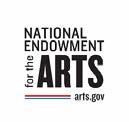
The Bagan Foundation
Citizens Bank Trusts/Ayer Trust

Conway Arena Ice Commission

The Demoulas Foundation

Samuel P. Hunt Foundation
The McIninch Foundation
RBC Foundation
Rotary Club West
Frederick Smyth Institute of Music
Madelaine G . Von Weber Trust
Mary Jordan, President
Harold Clark, Vice President
Joseph Kenny, Treasurer
Pam Baker, Secretary
David Bahi
Geraldine Boisvert
Ann N. Conway
Carol Kreick
Donald McDonah
Bettejean Neveux
Robert Oot
Jasmine Pandit
John Rein
Ashwini Saxena
Galina Szakacs
Amir Toosi
Olga Usyk
Drew Wilson
Deanna Hoying, Executive Director
Roger Kalia, Music Director
Rosemary Johnson, President, Friends of Symphony NH
Ron Kaye, Chair, Symphony NH Players’ Committee Representative
Cheryl Bishkoff, Vice-Chair, Symphony NH Players’ Committee Representative Staff
Deanna Hoying Executive Director
Joseph DuBose Orchestra Librarian | Personnel Manager
Paul LaFlamme Production Manager
Kate Merges Patron Systems and Marketing Manager | Graphic Design

Laura Grant Interim Director of Marketing and Communications / Press Contact - (917) 359-7319 | laura@grant-communications.com
Sophie Nahrmann Assistant Personnel Manager
Diana Sheedy Box Office Asistant
Kip Sheedy Usher Coordinator
Meghan Brady Grant Writer
Elliott Markow
Concertmaster
Emma Kondo Powell
Assistant Concertmaster
Kun Shao
Principal Second
Amy Ripka
Assistant Principal Second
Jane Dimitry
Lynn Basila
Nancy Goodwin
Leonora LaDue
Sargis Karapetyan
Ana-Maria LaPointe
Aleksandra Labinska
Katharina Radlberger
Dani Rimoni Principal Viola
Elaine Leisinger
Assistant Principal Viola
Elisabeth Westner
Kathleen Kalogeras
Seeun Oh
Nissim Tseytlin
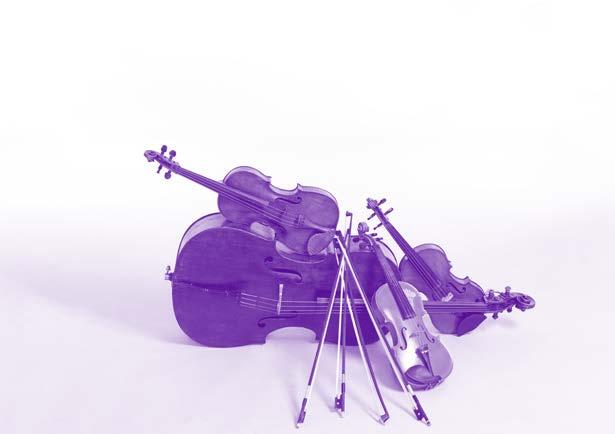
Harel Gietheim Principal Cello
Nathaniel Lathrop
Alexander Badalov
Young Sook Lee
Priscilla Hayes Taylor
Volker Nahrmann Principal Bass
Robert F. Hoffman
Kathleen Boyd Principal
Nina Barwell
Cheryl Bishkoff Principal
Ronald Kaye
Kyoko Battaglia English horn
Mackenzie Austin Principal
Michael Mechanic Principal
Sally Merriman
Leo Kenin Contrabassoon
Steven Harmon Principal
Kristin Olsen
Michael H . Weinstein
Ellen Michaud Martins
Richard Watson Principal
Richard Kelley
John Faieta Principal
Wes Hopper
Takatsugu Hagiwara Principal
Jeffrey Bluhm Principal Harp
Katie Lyon-Pingree Principal
Alexandria Peary New Hampshire Poet Laureate
Alexandria Peary was appointed by the Executive Council as New Hampshire Poet Laureate on October 23, 2019, to serve until March 2024. The state’s poet laureate serves as an ambassador for all poets in New Hampshire and works to heighten the visibility and value of poetry in the state. https://newhampshirepoetlaureate.blogspot.com

In the year of our Lord Two Thousand and Twenty-Three
APRIL 29, 2023
WHEREAS, the State of New Hampshire recognizes individuals and organizations who make significant and remarkable contributions to the people and to the cultural vitality and enrichment of the State; and

WHEREAS, Symphony NH, "The symphonic sound of the Granite State," is celebrating its 100th anniversary of the organization's first concert; and
WHEREAS, Symphony NH has been a celebrated source of innovation, inspiration, education and entertainment since 1923, and is the premiere symphony orchestra of the Granite State; and
WHEREAS, Symphony New Hampshire is dedicated to performing great music with an exceptional orchestra to enrich and delight diverse audiences, expand the musical and humanitarian contributions of New Hampshire's entire arts community, and provide learning opportunities with performances that spread beauty, empowerment, and good will; and
WHEREAS, over the last ten decades, Symphony NH, the oldest professional orchestra in the State of New Hampshire, has contributed greatly to New Hampshire's cultural proliferation and economy through live concerts and events throughout the state; educational programs; community initiatives and collaborations with other arts organizations; serving as a compelling tourism factor; and highlighting the importance of music within the State of New Hampshire; and
WHEREAS, we join with members of the New Hampshire community in celebrating Symphony NH's Centennial Anniversary and congratulate them on reaching this momentous milestone;
NOW, THEREFORE, I, CHRISTOPHER T. SUNUNU, GOVERNOR of the State of New Hampshire, do hereby proclaim APRIL 29, 2023 as SYMPHONY NH CENTENNIAL DAY in the State of New Hampshire, and call this day to the attention of all citizens.
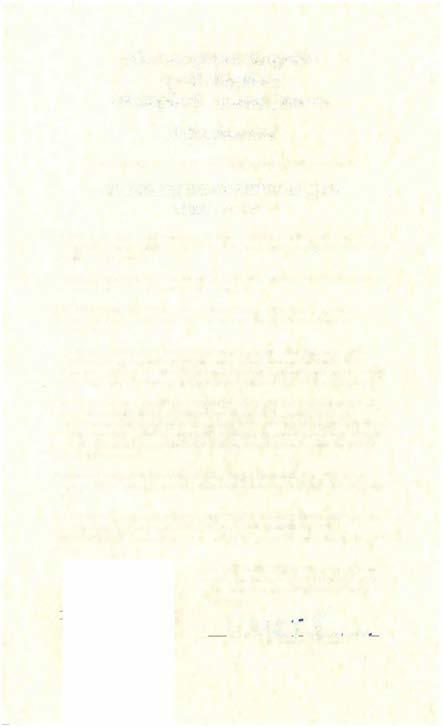
IN TESTIMONY WHEREOF, I have hereunto set my hand and caused the Seal of the State of New Hampshire to be affixed this 20th day of April, 2023.
�1.L��-�-
Christopher T. Sununu Governor